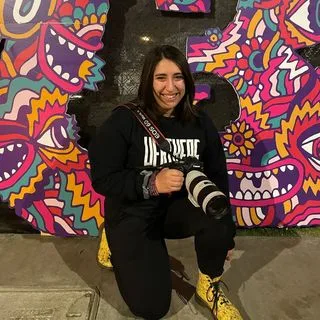Try sitting still throughout Ghetto Kumbé’s self-titled debut album. It’s simply impossible.
The trio hails from Colombia’s Caribbean coast and draws heavily from traditional west African and afro-colombian rhythms, infusing hard-hitting percussion into each track and weaving electronic samples throughout the album. Describing their aesthetic and sound, Ghetto Kumbé sum it up succinctly: “a psychedelic African tribe from the future.”
“Sola” is perhaps the best example of this—a beat-driven dreamy yet lively escape from reality. Ghetto Kumbé calls upon the gaita, a bagpipe-like traditional instrument played by the indigenous Colombian people of the Caribbean coastal region, to deepen the soundscape. And electronic production from Oliver “The Busy Twist” Williams rounds it all out. Other highlights include the pulsing “Vamo a Dale Duro” and the trance-inducing “Pila Pila.”
Each member of Ghetto Kumbé is famous in the Colombian music scene in their own right. El Guajiro has sung for La 33, La Otra Banda and past projects; Chongo added percussion to Sidestepper, Toto La Momposina, and many others; and Doctor Keyta specialized in African music and performed with a local dancing company as a percussionist. The three came together in Bogotá in 2014 and started producing, taking vinyl samples and adding in electronic beats. The performances at friends’ houses soon followed, and interest in the project grew. VICE Colombia took notice not long after, and the group released the Kumbé EP in 2016.
On their eponymous debut, Ghetto Kumbé also taps into a new theme: the rollercoaster that is love. They embrace vocals on the album (whereas past releases were more percussion-focused) to explore the dynamic ebb and flow of love in life. Edgardo Garcés “Guajiro” says: “For me the drum and the percussion are something that move me a lot, so it was really important during the healing process, through each beat of the drum and every moment of singing, every dance move, joyful laughter amid the tears. In the end it turned out well, we were able to end up dancing and laughing and thinking happy thoughts.”
But what’s even louder, lyrically, is the call to people to defend their rights and land. It’s a look into another country’s political issues, especially those that indigenous people are facing right now.
When travel restrictions lift, Ghetto Kumbé plans to tour the US with their signature neon tribal masks and traditional dress, heavy drums, and intense beats. Until then, we’ll be dancing to their first album at home.
Story by Taylor Gilliam
Image courtesy of Ghetto Kumbé

